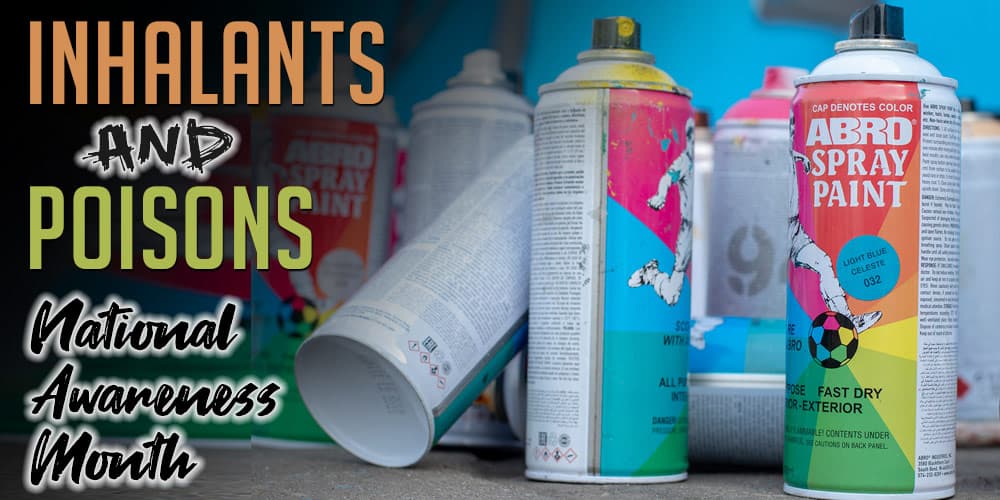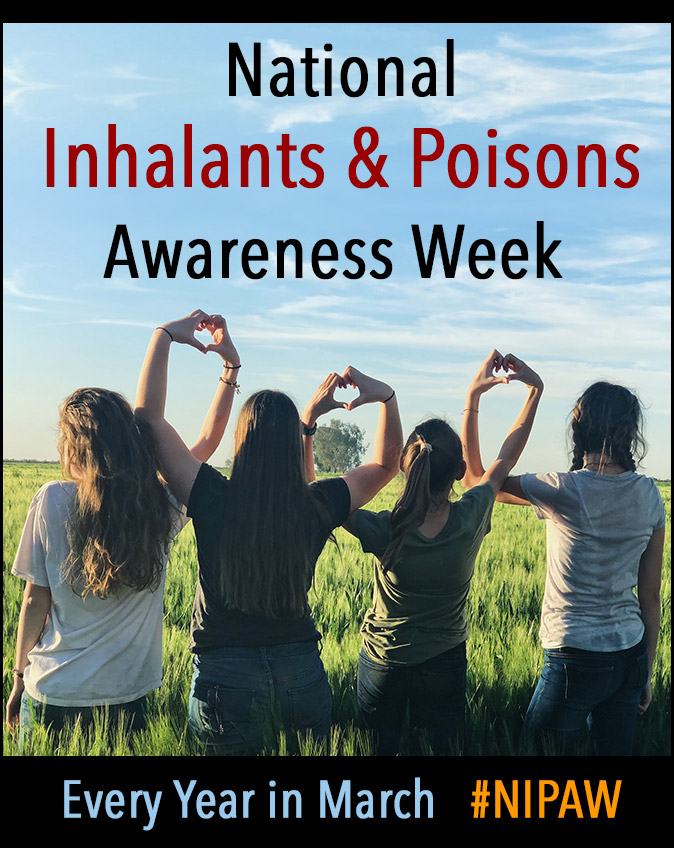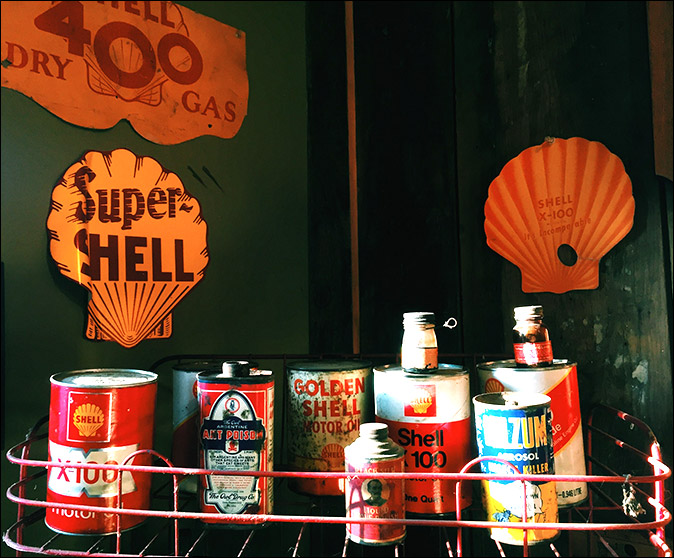
National Inhalants and Poisons Awareness Week is March 12 to 18, 2023
Can inhalants kill you? Yes, inhalants are known for causing a sudden death, commonly referred to as “sudden sniffing death syndrome.” Inhalants are substances that are rarely taken any other way than through breathing them in.
The scary thing is that children as young as 12 are getting addicted to inhalants. They’re readily available and accessible, so young children can easily get their hands on inhalable substances.
Increased awareness about the hazards of using inhalants to get high is a key to reversing this dangerous trend.
Inhalants are the fourth most abused substance after alcohol, tobacco and marijuana.
People often overlook the seriousness of inhaling toxic substances. For example, most people don’t know that breathing in helium isn’t all fun and games, and can also cause sudden death?
The hazards of inhalants should be known by everyone because just one episode can cause long-term memory problems.
National Inhalants & Poisons Awareness Week is a vital event to highlight this serious issue. It’s a week to be observed so that we can be reminded of the severity of huffing and educate parents, teachers, and young children and teens.

What Parents and Teens Need to Know about Inhalant Abuse
An extraordinary 21.7 million Americans over the age of 12 say that they’ve used inhalants at least once in their lifetime as reported by NIDA. One of the major issues is that these toxic substances can cause irreversible brain damage.
Kids use inhalants to get high. Parents and teachers need to know the most frequently used nicknames kids use for taking inhalants include “sniffing” and “huffing.” More than half of all kids in the United States (59%) know of friends that use inhalants, according to ACE – the Alliance for Consumer Education.
Sometimes people put a plastic bag over their head, or just their nose and inhale the fumes. This is known as “bagging,” and is obviously extremely dangerous.
Taking the time to educate kids about the dangers of inhaling toxins is extremely important.
10 Telltale Signs How to Tell if Kids Are Using Inhalants
Understandably, parents and teachers will want to know how to tell if kids are using inhalants. It can be hard to tell if a child has a problem with inhalants because the effects are often short-lived.
Here are Common Signs Kids are Using Inhalants:
- Chemical smells on clothing and backpacks
- Strange smelling breath
- Loss of appetite
- Apathetic
- Lack of coordination
- Acting as though they’re drunk
- Strange stains on skin or clothes
- Slurred speech
- Red eyes
- Runny nose
Kids are often peer pressured into trying inhalants. But if they’re educated about the dangers, then they might make better choices, and set a good example for others to follow.
When talking to children about inhalants or substance use in general, it’s important to speak honestly and calmly. If a child is taking inhalants it could be a symptom of a deeper underlying problem. Sometimes they might also use several other drugs and could be suffering from an underlying mental health condition.
Being empathetic and providing support is the only way to produce lasting recovery, which is why the compassionate care model of recovery is so effective.
Street Names for Inhalants
There are a lot of street names that people use to hide that they’ve been taking inhalants including:
- Air blast
- Highball
- Ames or Amys
- Hippie crack
- Shoot the breeze
- Huff or huffing
- Snappers
- Laughing gas
- Snotballs
- Bolt
- Locker room
- Boppers
- Medusa
- Texas shoe shine
Suffice it to say, kids will come up with a wide range of creative ways to explain (or hide) huffing.

Household Products – Common Examples of Inhalants
Most people don’t realize that there are poisonous inhalants virtually everywhere and common household products can be used in ways that can cause harm.
There are four main classifications of inhalants to know about:
- Volatile Solvents
- Gases
- Aerosols
- Nitrites
1. Volatile Solvents
Volatile Solvents are the types of inhalants that vaporize at room temperature and are usually found in the home or at school.
Here are some examples of volatile solvents:
- Felt-tip markers
- Paint thinners
- Paint removers
- Dry-cleaning fluid
- Degreasers
- Gasoline
- Glue
- Correction fluid
2. Gases
There are several forms of gases that can be misused as inhalants and some of them seem very innocent.
The most common forms household of gases used as inhalants include:
- Whipped cream dispensers (also known as Whippets Drug)
- Butane lighters
- Propane tanks
- Refrigerants
- Helium
3. Aerosols
Most people have a wide range of aerosols in the home that could be used as inhalants.
Here are a few examples of aerosol inhalants:
- Hair spray
- Spray paint
- Deodorant
- Vegetable oil spray
- Fabric protector spray
4. Nitrites
Nitrites are a separate class of inhalants because they don’t work directly on the central nervous system and some banned nitrite substances are used as sexual enhancers.
Although they are banned, its still possible to find nitrites labeled as the following:
- Poppers
- Snappers
- Room odorizer
- Leather cleaner
- Liquid aroma

Who Are Three Types of Inhalant Users?
When people use inhalants they can become apathetic and lazy, resulting in poor performance at work or school.
Chronic inhalant use, like other substance use disorders, can rob people of feelings of joy. This frequently leads them to give up hobbies or other activities that they previously enjoyed.
In other cases, huffing can produce argumentative, aggressive behavior, which can result in fights that would not have happened otherwise.
In some cases, a person who uses inhalants can also have emotional problems. Sadly, this often means that they attract others with similar issues and the substance use gets out of hand.
Here are the three categories of inhalant users:
- Young inhalant users
- Adolescent polysubstance users
- Inhalant-dependent adults
What Are 5 Dangerous Effects of Inhalants on the Body?
Inhalants interfere with endorphin receptors in the brain.
Instead of considering the possible devastating medical consequences, people take inhalants because they have psychoactive properties and alter the mind.
Prolonged sniffing of inhalants puts a lot of pressure on the heart and can lead to heart failure in a matter of seconds. Just one episode of sniffing aerosols can cause sudden death.
Here are some other effects that sniffing inhalants can have on the body:
1. Nausea
inhaling toxic substances can cause nausea and sickness.
2. Fatal Injury
Because of the mind-altering properties of inhalants, people can become disorientated while under the influence. This can cause accidents, both big and small, especially if the person involved uses machinery or drives a car after huffing.
3. Choking
People can vomit after huffing and inhale the vomit, which can cause fatalities.
4. Coma
After huffing, the brain can become so overwhelmed from the toxins that it completely shuts down.
5. Asphyxiation
Repeatedly inhaling toxic substances can reduce the oxygen levels in the brain and body, which can lead to asphyxiation.
Why are Inhalants Popular Among Teens?
Most Inhalants are easily available and legal, meaning there’s no age restriction or punishment for possession. Interestingly, inhalant abuse is higher in regions where there’s little access to alcohol.
Inhalants are also easy to find and cheap to buy, making them an alternative to drugs for people with little money.
Another reason young people use inhalants is because the high usually occurs within 7 to 10 seconds after inhaling. The effects can last for up to five minutes, which means people can get a quick high without anyone else noticing what they are doing.
Unfortunately, using aerosols, gases, nitirites, and solvents to get high can be addictive and difficult to stop, requiring inhalant addiction treatment to overcome the dependence.
Because using inhalants is dangerous and on the rise, we all need to do everything we can to educate people on the dangers of inhaling toxic substances.
This is especially true for teens and pre-teen children who are more likely to begin huffing at an early age.
National Inhalants and Poisons Awareness Week #NIPAW is an important time to increase awareness about this dangerous problem that can be avoided through proper education and training.
Related Posts
- A Month of Awareness: National Recovery Month + Suicide Prevention Month
September is National Recovery Month and National Suicide Prevention Month to create awareness about each…
- October is Depression Awareness Month
During Depression Awareness Month in October, we’ll be raising awareness to help people who are…
- June is PTSD Awareness Month
Because trauma impacts so many people, June is recognized every year as PTSD Awareness Month.…
